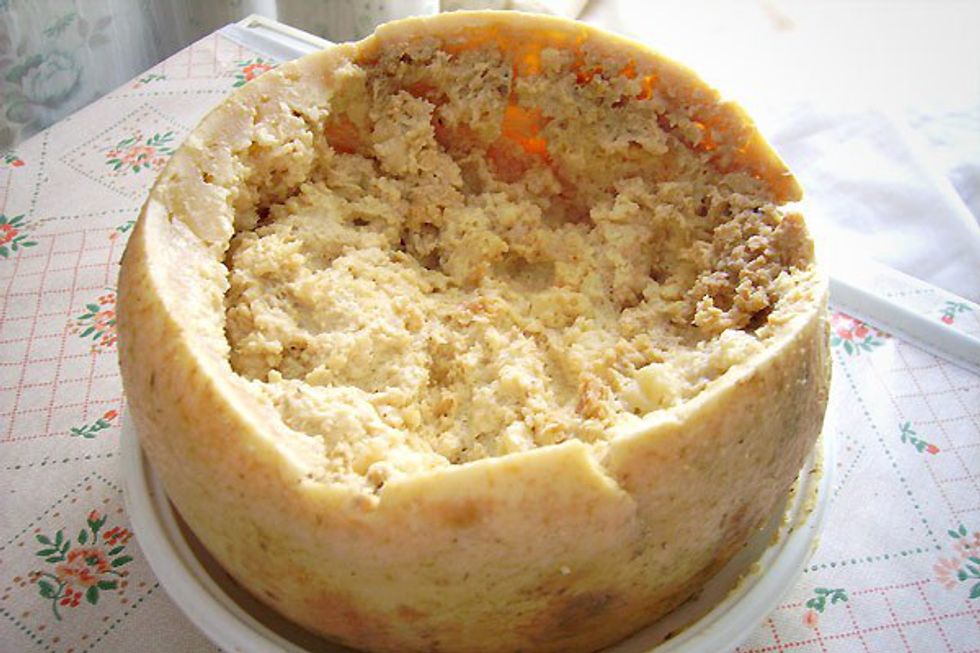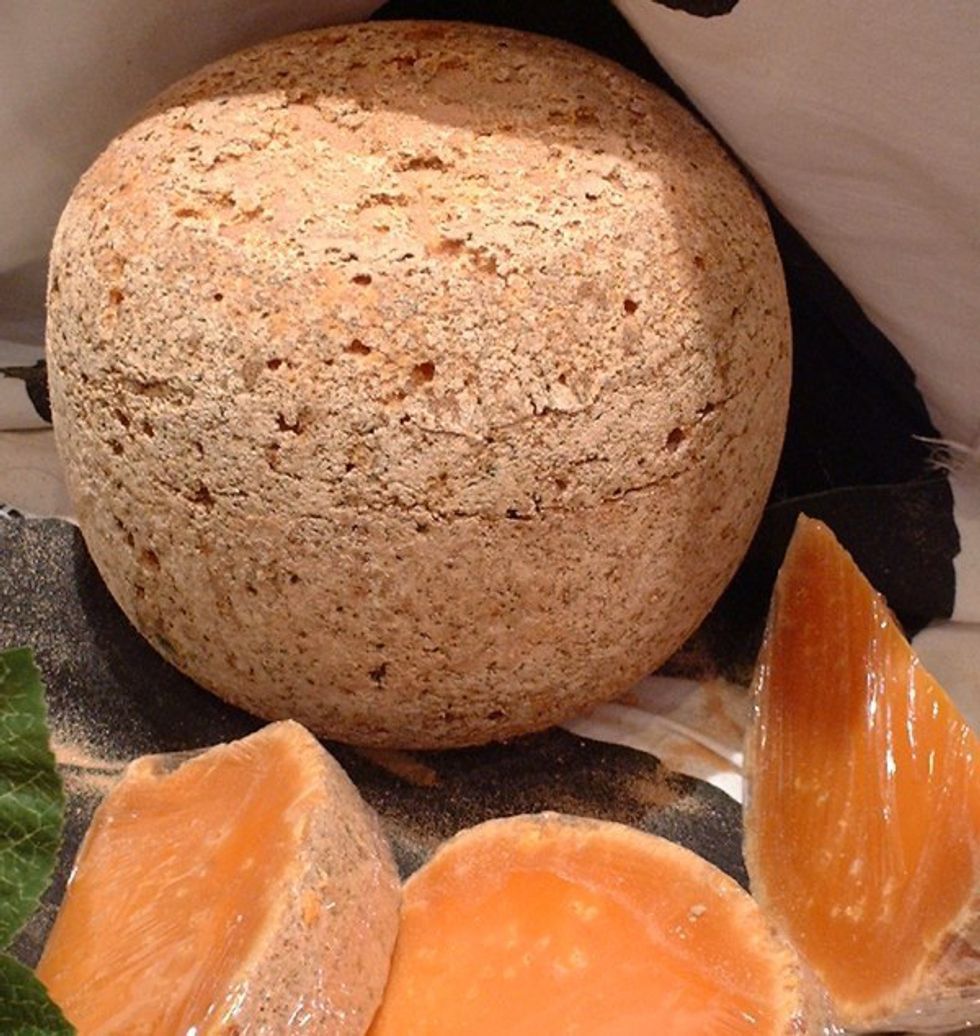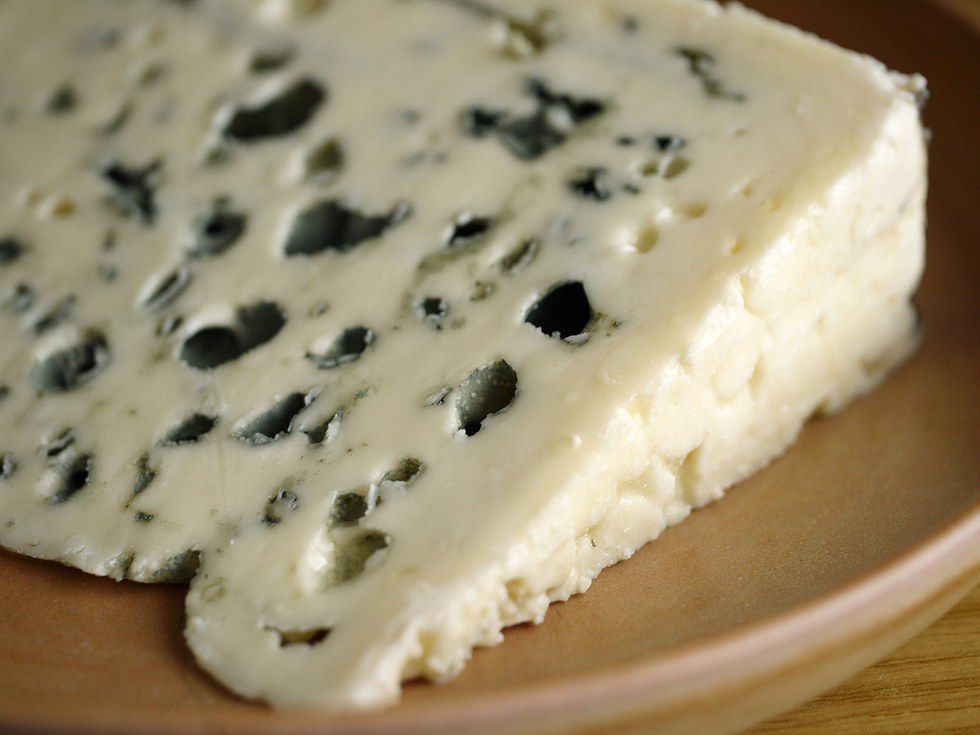We all love cheese (and yes, I know not everyone) but have you ever wondered about the cheeses you couldn't eat? The ones that are illegal in America but popular everywhere else? Here's a list of four cheeses you will never (well, some are getting their bans lifted) get a chance to eat in the US without illegal actions.
1. Brie de Meaux
Arguably the best Brie cheese (or so I've read), it's a classic in French history and known to be the cheese of royalty. The European Tournament at Congress of Vienna, in 1814, awarded Brie de Meaux the "Le Roi des Fromages" (The King of Cheeses). Unfortunately for all of us in America who love Brie, our Brie isn't even the real deal. Real Brie is made from raw unpasteurized cow's milk. In 2004, the FDA declared that raw milk cheese must be aged for at least 60 days, no less (and with pasteurized milk). Laws were installed due to concerns about pathogens such as E.coli and listeria. Because of this law, various French cheeses such as Reblochon cannot be distributed in America.
2. Casu Marzu
Casu Marzu is a special type of Sardinian cheese that is made with a particular ingredient that will probably make your skin crawl. The special ingredient is maggots. The cheese develops when cheese fly larvae meet Pecorino, a type of cheese, for further fermentation while also causing the cheese to decompose (fully read about the process here). You can only eat the cheese while the maggots are still alive, the maggots dying renders the cheese toxic. The US banned this cheese not only for it unpasteurized sheep milk but for the maggots themselves. They go against the six mites per square inch ruling. The six mites per square inch ruling is that there can't be no more than six mites per square inch.
3. Mimolette
Another cheese made with an another critter. This interestingly bright orange tinted cheese is a native of France (what a surprise!) and is formed with the help of mites. These cheese mites eat the rind of the cheese for a few years while the cheese ages. For the FDA, this cheese (obviously) goes against their six mites per square inch ruling. In late 2014, the bans was lifted (the only article I cold find about this) for "Boule de Lille" aka Mimolette.
4. Roquefort
Another classic French, history filled cheese that is banned for the bacteria it contains (same with St. Nectaire, Morbier and Tomme de Savoie). Roquefort, like many other cheese, that come from raw unpasteurized milk (sheep) have bacteria in it which is an important part of its production. But the thing is Roquefort and the other cheeses contained nontoxigenic E.coli, the very same nontoxigenic E.coli that is in our stomachs. Harmless and keeps our digestive system balanced as well as in check nontoxigenic E.coli. The problem raised when the FDA saw higher levels of nontoxigenic E.coli, which signified that the cheese was being made in unsanitary conditions. Also, the FDA stated they were not banning the cheese, but the blue spotted cheese is still being regulated.
As you can see there are plenty more cheeses that are bad (and a lot of them tend to be French). There were a lot more cheese that could have been added to the list but they were banned for the same reasons as the other cheeses. Unfortunately in order to try those cheeses, you have to book your next flight to France or find ways to get the cheese smuggled to you. Fortunately though, some of the bans have been lifted for some of these cheese, so enjoy them while they still exist (although some regulations make them hard to find in stores).






















